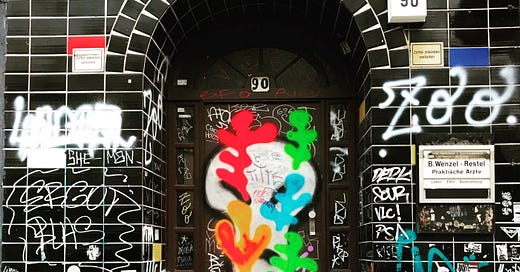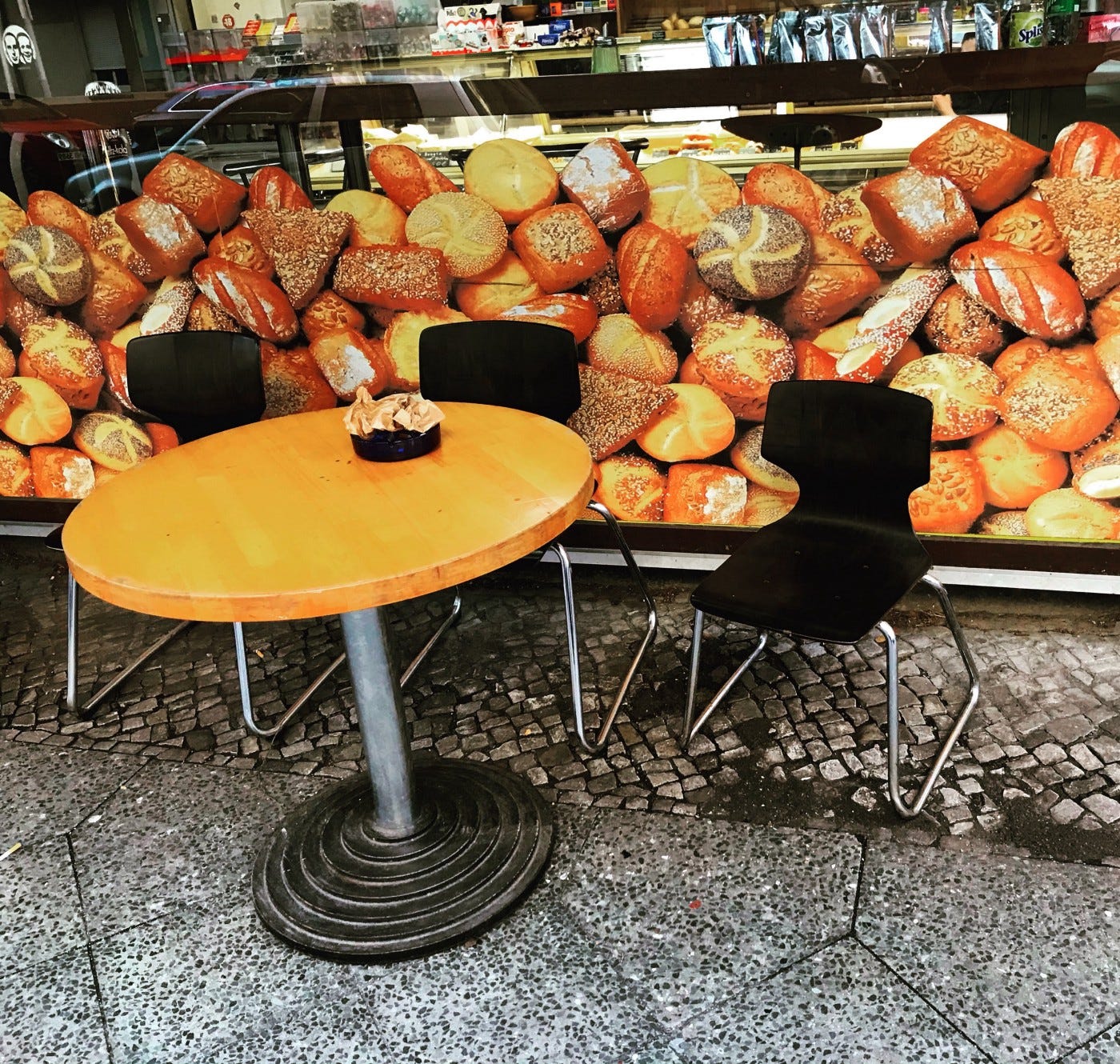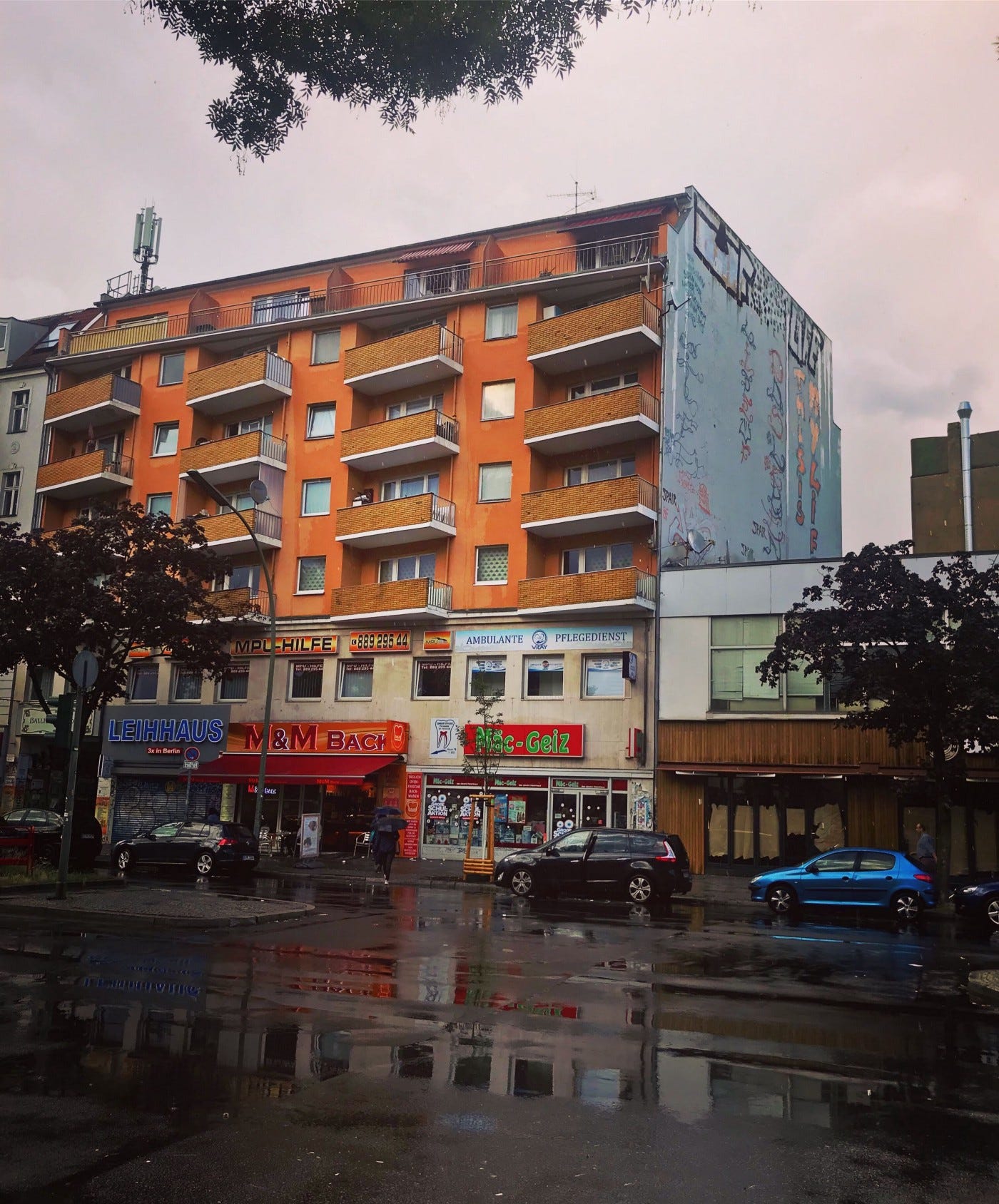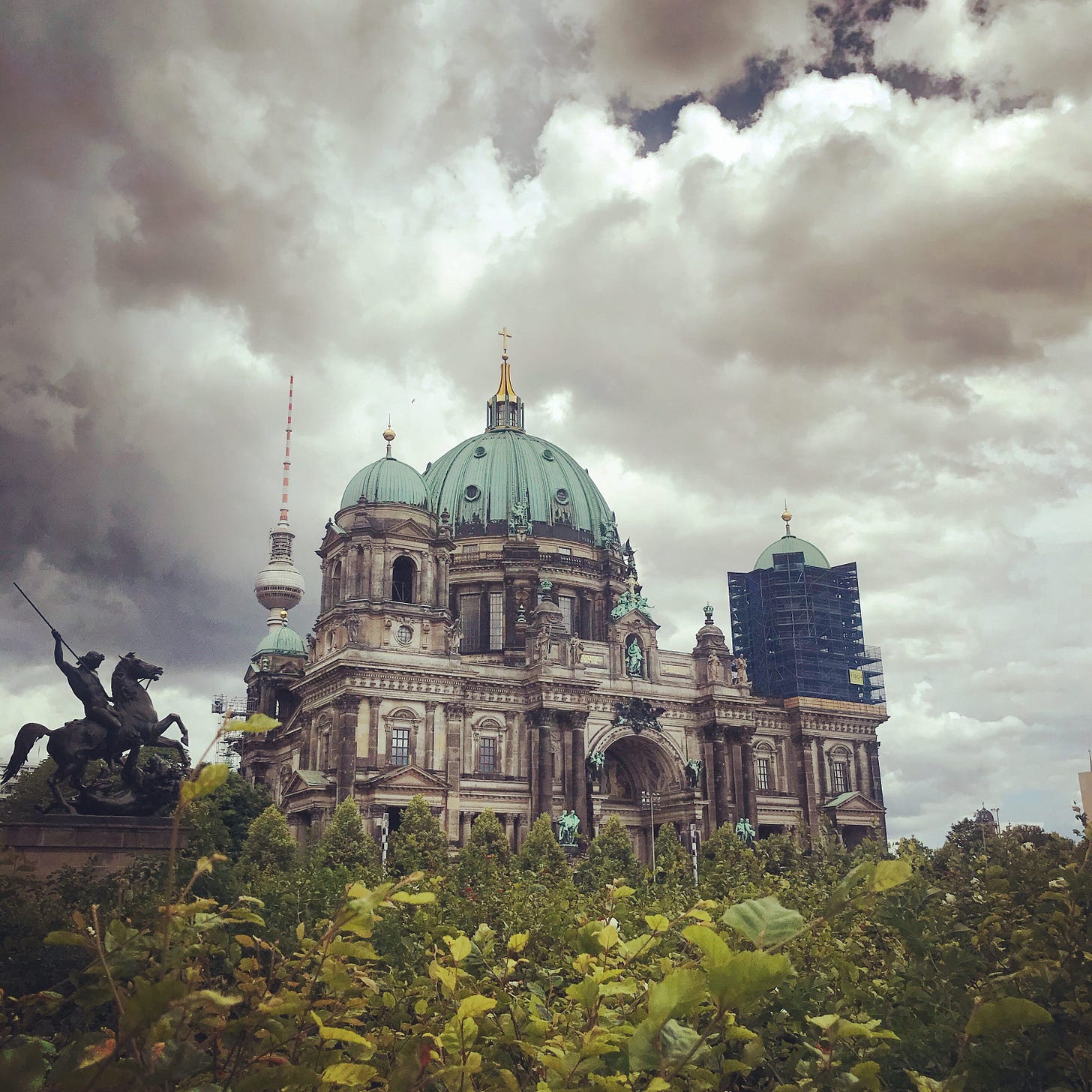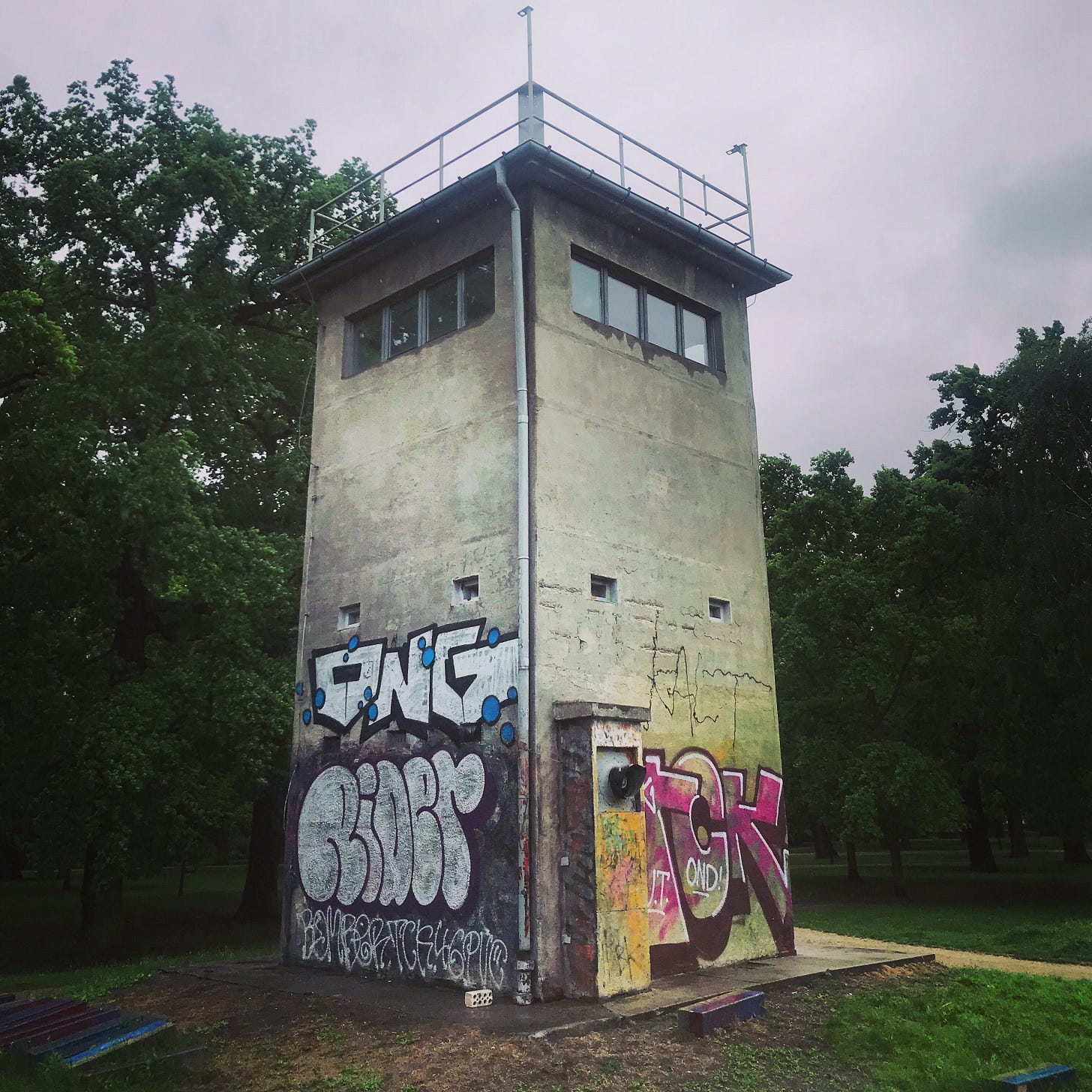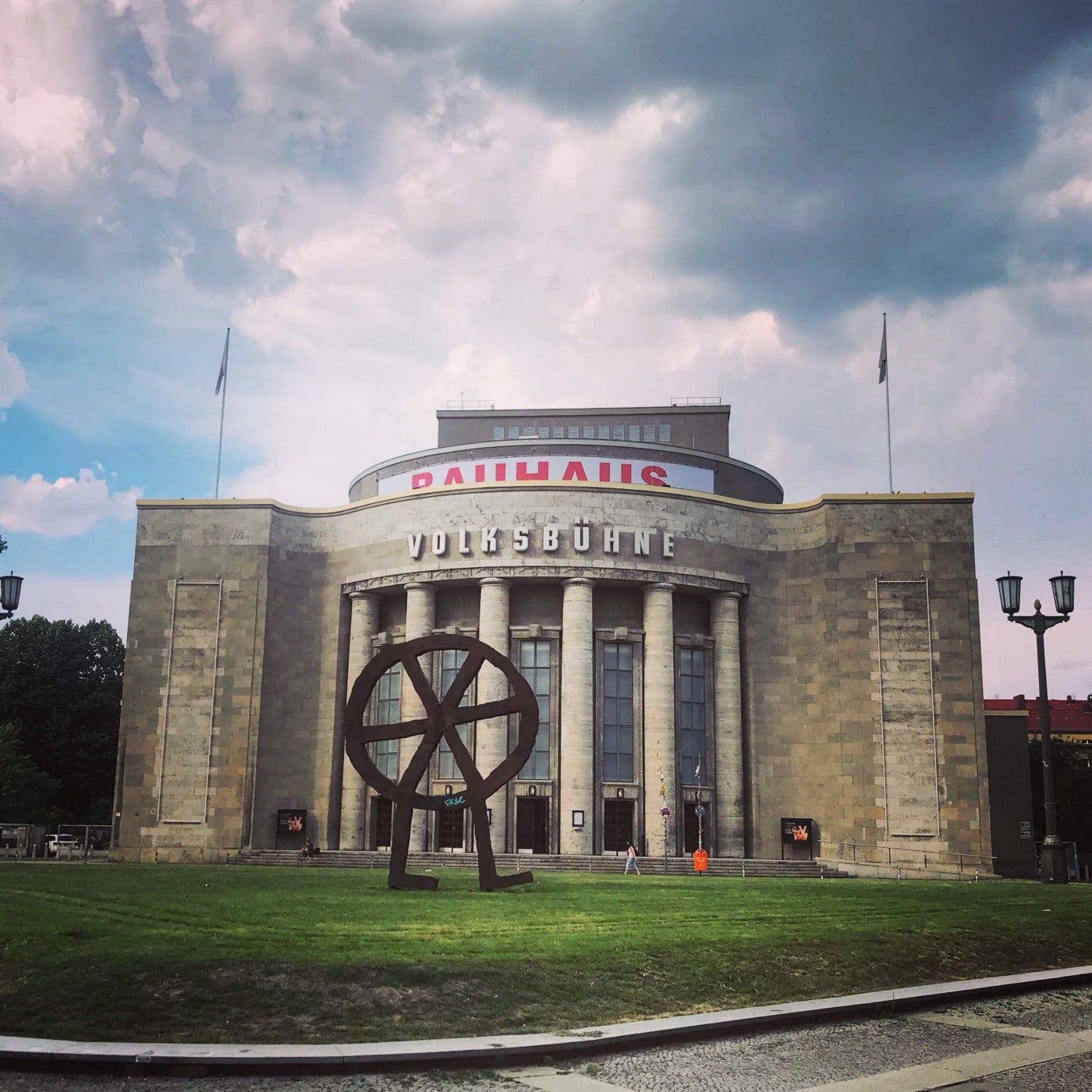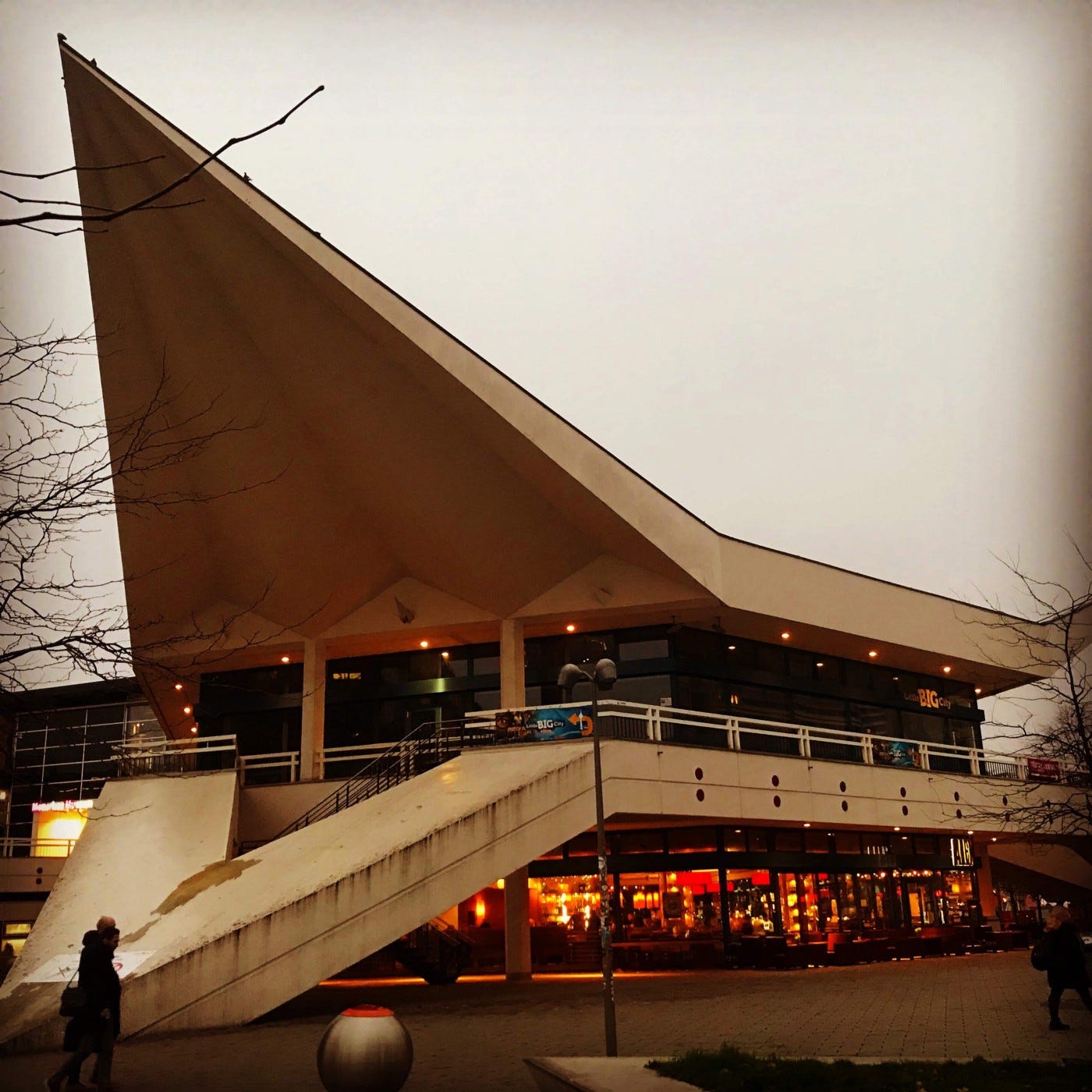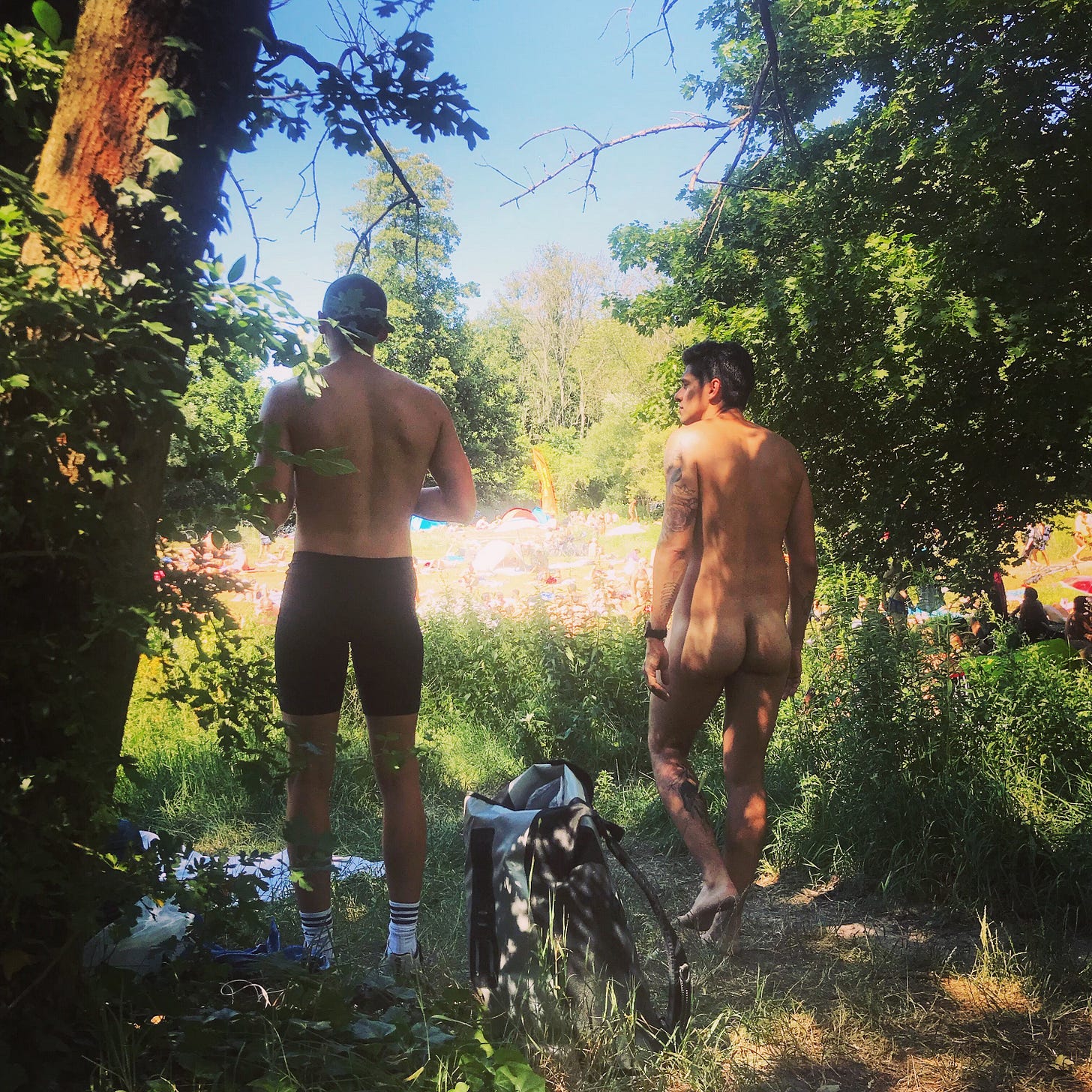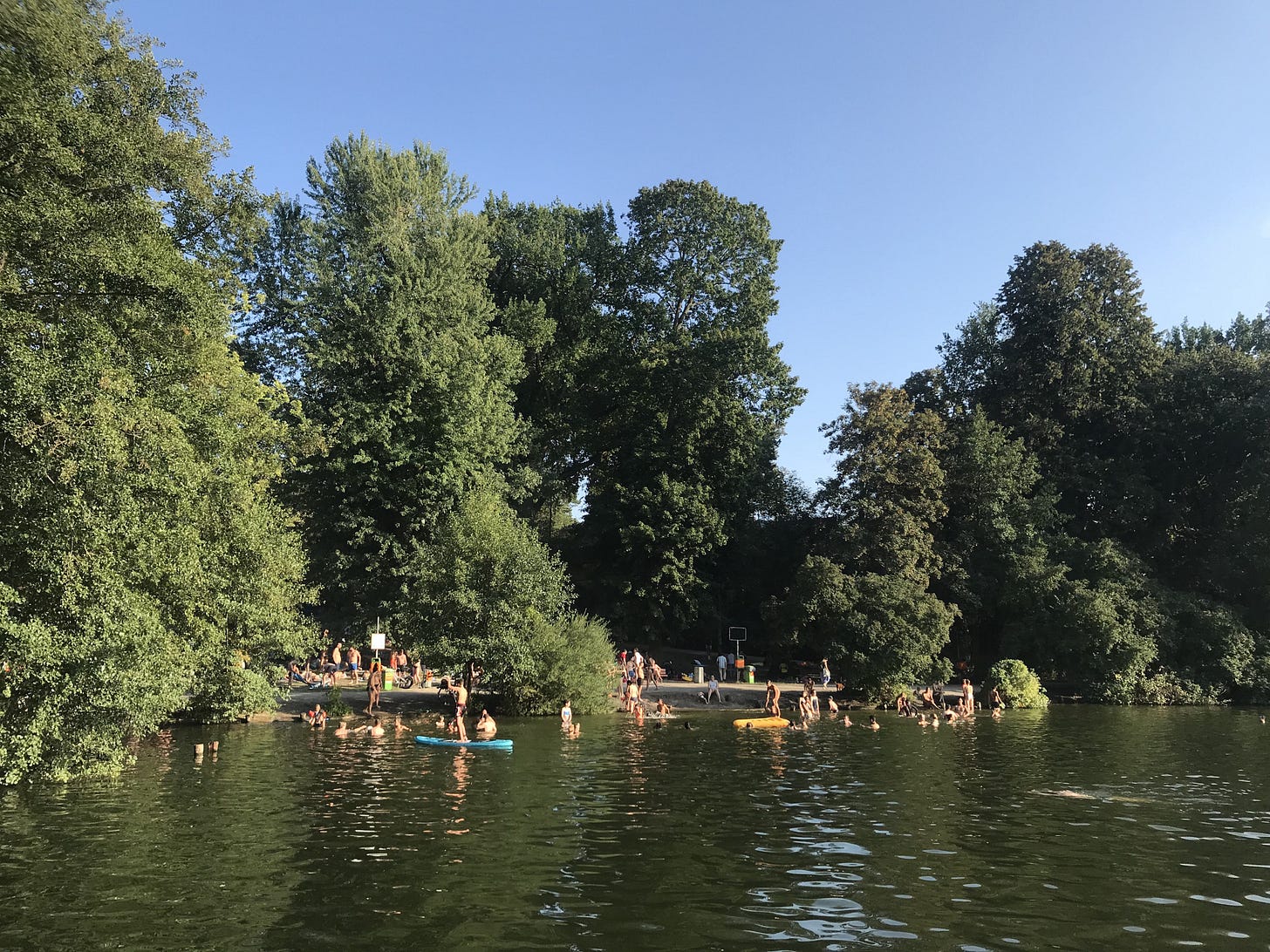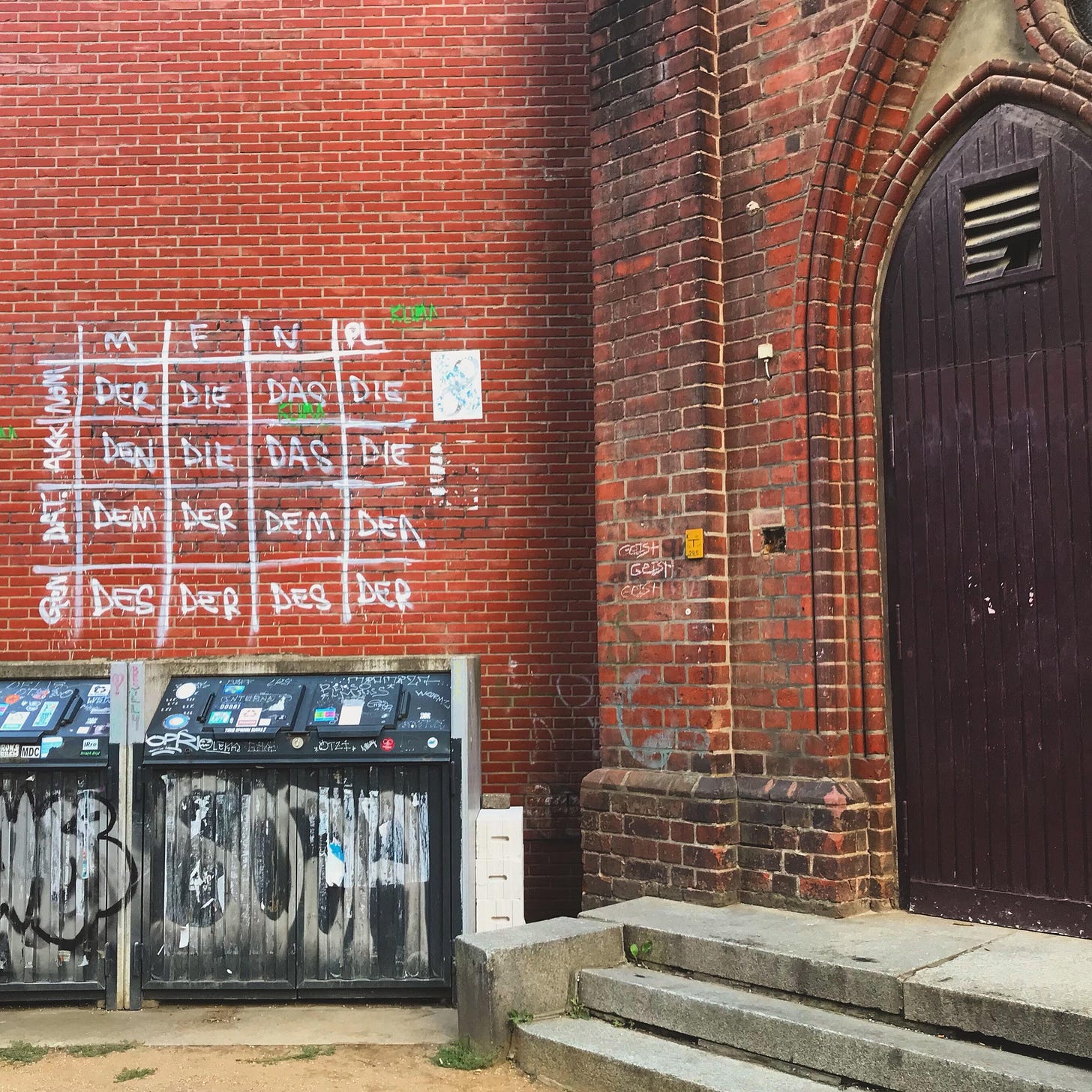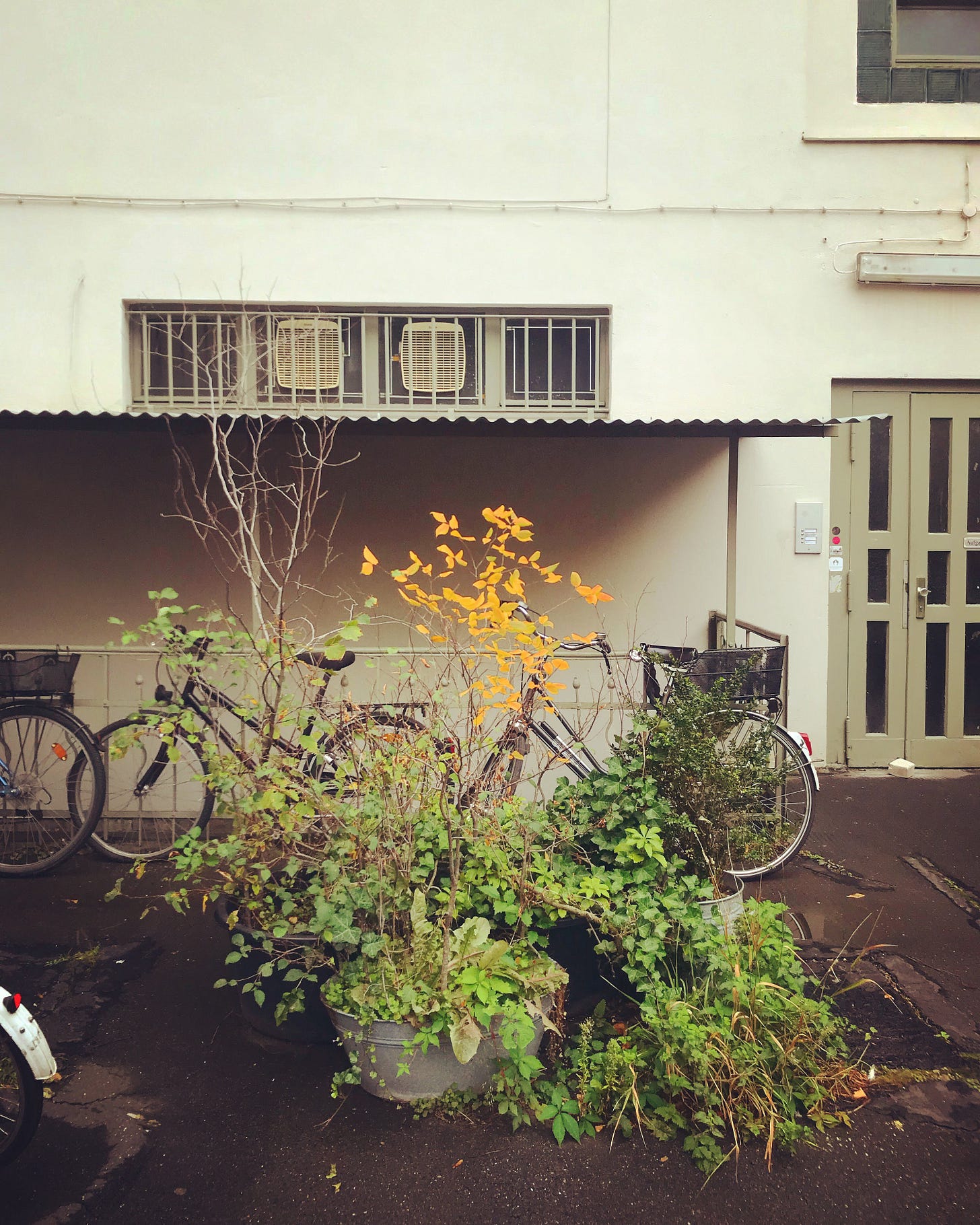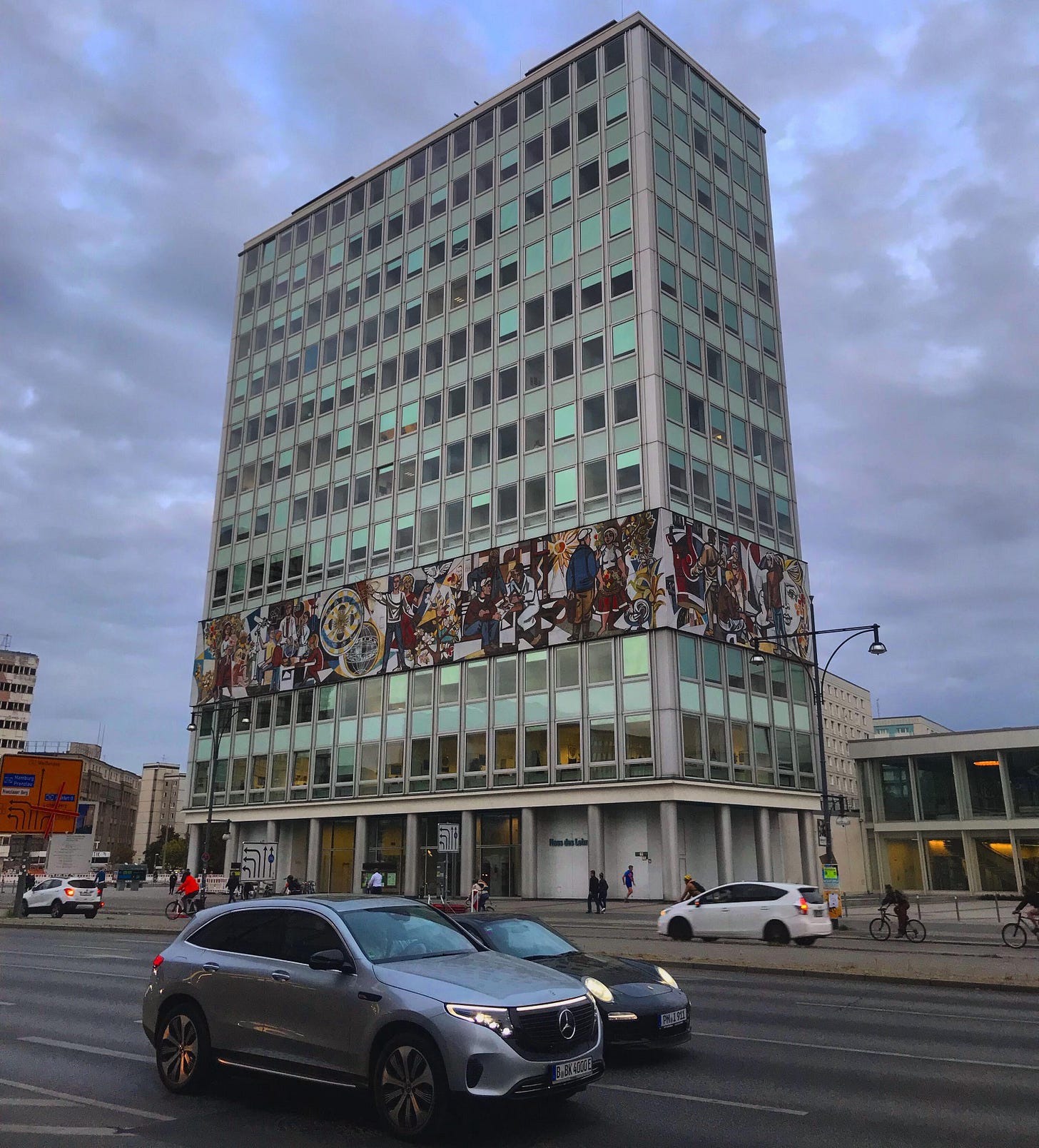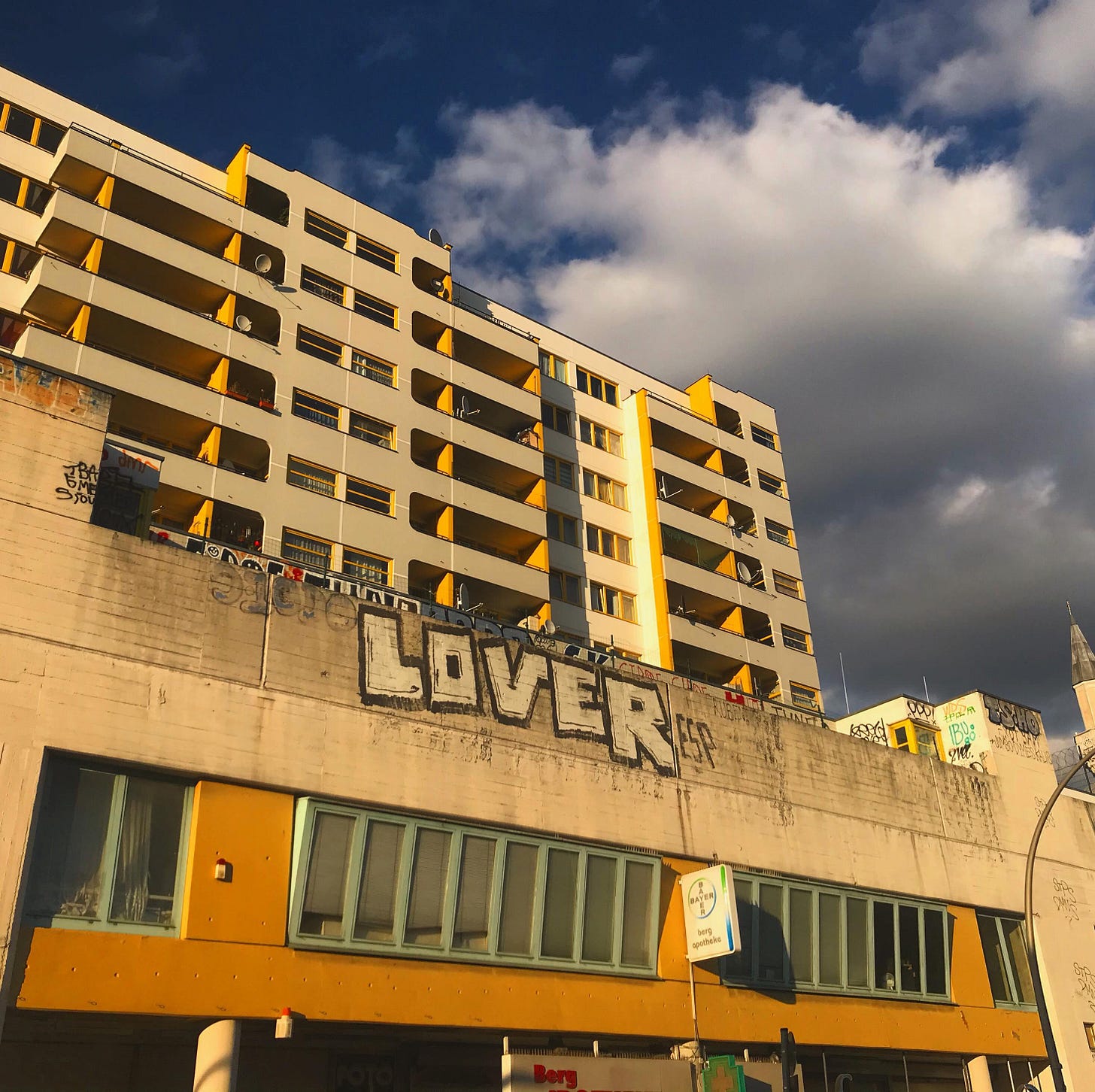A Party in a Graveyard: Reflections on Berlin After a Year Away
Writing about the German capital — with photographs
Berlin is a party in a graveyard. Europe’s youth capital, Berlin is also beset by sustained guilt for the atrocities that were ordered by its Nazi officers during the Third Reich and it has a nasty hangover from its 40 plus year communist bender. Built and rebuilt on the ruins of multiple regimes, Berlin in the 21st century hosts an extraordinary diversity of refugees, immigrants, and expats.
The city has an inimitable aesthetic. On arriving, from the taxi window, one is struck by the detritus of the 20th century: derelict warehouses, the glint of the sprawling railway tracks, buildings orphaned next to lots once devastated by war damage. In the background are rows of Communist-era block housing. A disused factory might have a new purpose: a swimming pool turned arts space, or power plant turned nightclub. Peeling walls are mottled with decades of street art. They reveal the buildings’ former lives, their past degradations. That newly whitewashed surface, in the foreground, will not last long before it is attacked. You accelerate along the leafy canals, where grass grows wild, untended; the city’s cost-cutting dovetails with a fondness for the unkempt.
Perhaps there are moral qualities to this Berlin aesthetic. It privileges process and time passing — it is a reminder that nothing is fixed. The Neues Museum is an illuminating example: here the bombing damage is not patched up but exposed, recalling how war brutalized Berlin, as Berlin brutalized Europe. The weight of past crimes, the fact that the city has been a laboratory of ideologies and the command centre for their victims, is inescapable. With this comes a heightened historical mindfulness, with the many memorials and a strong public culture of remembrance. Perhaps that’s why walls are not whitewashed, but allowed to peel.
The omnipresent graffiti, the general deficiency of mass advertising, and the fact that so much space in Berlin continues to be undeveloped despite recent gentrification gives the city an anti-authoritarian and not entirely streamlined feel. For a long time half-Communist, the capital is an affront to the mass-produced, consumerist, capitalistic mode of standardized living that dominates most Western cities.
Nor is there a standard Berliner. The moment your train pulls into the busy interchange of Alexanderplatz, the crowd piles in and you are faced with a barrage of tattoos, purposefully weird haircuts, Taliban-hipster facial hair, and sharp-edged German eyewear. The fashionable mix with those in workaday proletarian garb. Two journeymen apprentices in medieval overalls stand above the camera-laden tourists. An Italian couple looks out of place — Berlin is decidedly a city that dresses down, even more so then the rest of Germany. Swarming the doors are a group of party kids, flushed high and half-clothed, carrying open containers, fresh from the Technostrich. Your morning is only their late evening. There is the smell of sex somewhere. One has his hand down his boyfriend’s trousers. No one deigns to notice. The base culture of Berlin is proletarian, and many Berliners are suspicious of national codes. Parts of the city are full of immigrants from Turkey, Lebanon and elsewhere, mixing with a recent influx of internationals and refugees. All this means that expectations to acculturate are diminished.
Berlin’s aesthetic has been something of an inspiration, or a stereotype, for other cities, and has melded into a more generalized hipster aesthetic, cross-pollinated between Berlin, Detroit, east London and Brooklyn, and now found worldwide. Gentrification, rising rent prices and the paradoxical standardization of non-standardized aesthetic make some wonder whether Berlin is “over.” But the city is so vast that the alternative nightspots have simply moved farther out from the center. Some say: you can still have a wild time in Berlin, but at least now, it’s also possible to have a good meal. The Berlin Renaissance, as it’s called, is not over, but perhaps it is entering its decadent phase.
Berlin in the 1990s became a legendary maze of abandoned industrial spaces, electronic sounds from empty buildings and the stark remaining differences between East and West. But it was also a place of mass unemployment and economic uncertainty. There were big plans for Berlin shortly after reunification. As part of the reunification treaty, the capital was moved back to Berlin although certain ministries would remain in Bonn. Propelled by grand expectations for the new capital, Berlin became a city of cranes.
Berlin rose from a small river island settlement surrounded by bogs to become one of the most crucial economic and political centers of Europe. The place is a palimpsest of a cutting edge and dynamic modern culture over a troubled history, one that is visible in bombsites, museums, late-night clubs, and a lake where you can see about 10,000 naked people on an average summer weekend.
The relics of the former GDR are everywhere in the former east Berlin, and they convey such a hopeful vision of the future, it’s hard not to get swept up in the optimism of what its leaders must have felt — honest or not, we can’t be sure at this point.
Berlin’s lakes are one of its pleasures, and strangely, most people who haven’t been to Berlin don’t even know they exist. I think the typical idea of Berlin for those who don’t know it is a concrete jungle of socialist housing blocks. Yes, there is that. But there’s also a lot of green and many glacial lakes surrounding the city that are positively sublime in the summer.
For anyone who says the Germans don’t have a sense of humor, show them this graffiti on the side of a church in Neukolln, Berlin. It depicts a chart of all the possible articles in the German language — various options required for distinctions like singular and plural; masculine, feminine, and neuter; and case declensions. If you don’t know what cases are in the German language, you don’t want to know. It’s enough to know this system makes the language much more complex than the Romance languages and English, which don’t bother with grammatical case at all.
Socialist realism has left its mark in Berlin. The House of Teachers (above left) has a magnificent socialist mosaic by Walter Womacka entitled Our Life. It was installed in 1964 just off Alexanderplatz.
I lived in Berlin for about three years and there was much to like about the German capital. It’s a scruffy, sometimes dirty mess of a city — though of course it has its posh parts — but it’s a fun and accepting city where you can do almost anything in a municipal park. It’s a pro-drugs and drinking culture, yet it has its buttoned up side, too — with the infamous German rule following and scolding culture alive as ever. Though Berlin isn’t David Bowie, Sally Bowles, and international espionage anymore, it’s still a creative and vibrant city. For me, ultimately the city wasn’t the right fit because ultimately I didn’t find it very inspiring, but I do miss the people and the energy.

